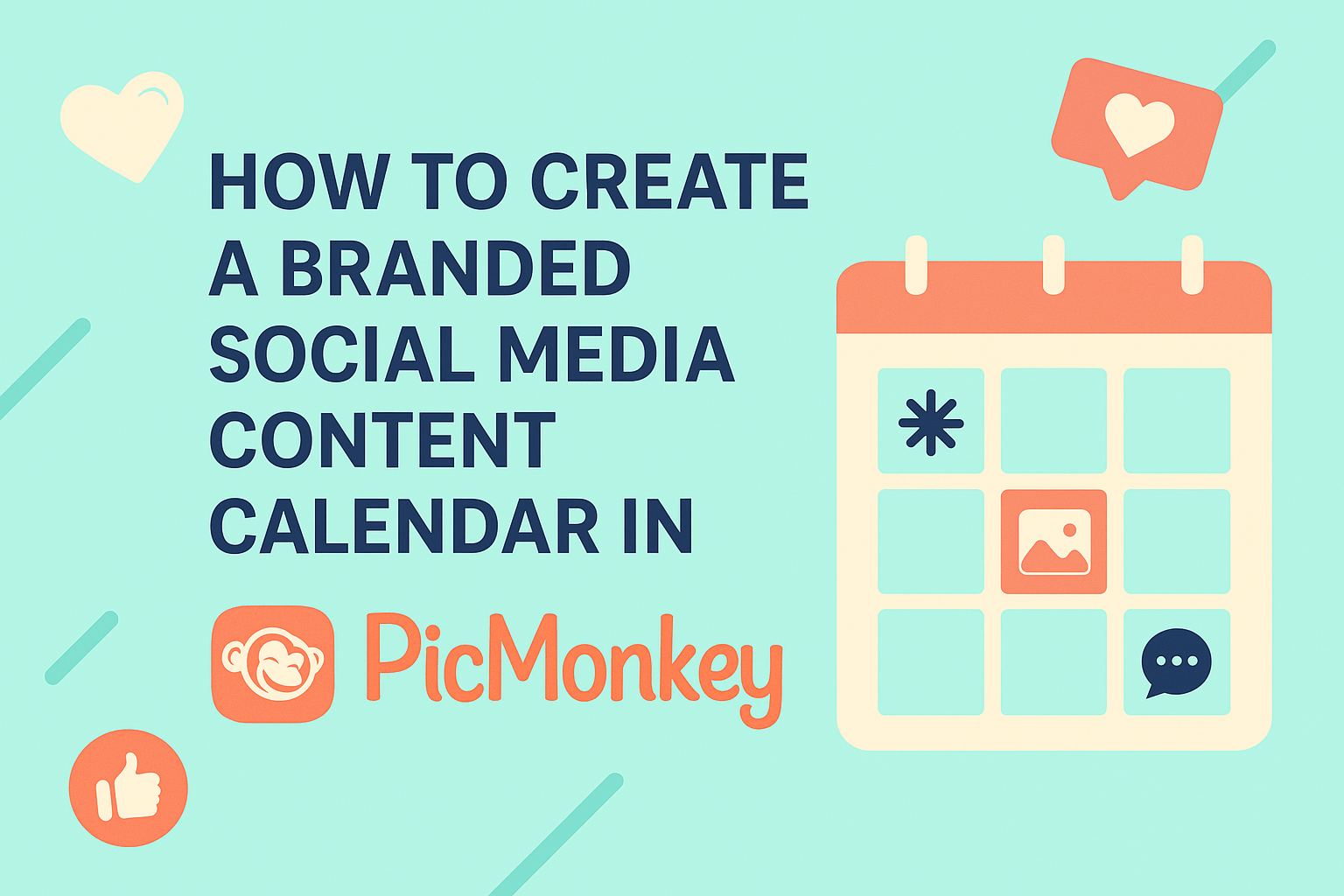Creating a branded social media content calendar can make a big difference in managing online presence.
By using PicMonkey, anyone can easily design a customized calendar that organizes posts, plans themes, and keeps track of important dates. This not only saves time but also helps maintain a consistent look and feel across all platforms.
With PicMonkey’s user-friendly tools, anyone can start from scratch or choose from a variety of templates.
This allows them to add their branding elements effortlessly, making their social media strategy both effective and engaging.
A well-planned calendar keeps content fresh and relevant, ensuring they connect with their audience.
Getting Started with PicMonkey
PicMonkey is a user-friendly tool designed for creating stunning visuals.
Setting up an account and knowing the interface are crucial first steps for anyone looking to create a branded social media content calendar.
Setting Up Your PicMonkey Account
To start using PicMonkey, the first step is creating an account.
Users can visit the PicMonkey website and sign up using an email address or social media account. Once signed up, a confirmation email will be sent.
After confirming the email, users can choose a subscription plan that suits their needs. PicMonkey offers various options, including free and paid plans, each with different features.
It’s important to explore the account settings.
Users can update profile information and payment details if needed. Familiarizing oneself with the account dashboard can make using PicMonkey smoother in the long run.
Understanding the PicMonkey Interface
The interface of PicMonkey is intuitive and easy to navigate. When users log in, they’ll find a dashboard that displays different tools and options.
The main features include templates, editing tools, and design assets.
On the left side, users can access the “Templates” section to find ready-made designs for social media posts. This saves time and provides inspiration for those starting out.
The top menu includes options like “Design,” “Edit,” and “My Projects.” Each section offers specific functions that are straightforward. By clicking on tools, users can add text, images, and effects to their projects.
Exploring the interface can help users understand how to create and customize their content effectively.
Using these tools, they can start crafting beautiful designs tailored to their brand.
Designing Your Content Calendar
Creating a visually appealing and functional content calendar is essential for effective planning. It helps keep the brand’s social media presence organized and consistent. Here are some important steps to design a calendar tailored to specific needs.
Choosing the Right Template
Selecting the right template is the foundation of a great content calendar. PicMonkey offers various templates designed for social media planning.
Users should look for templates that fit their posting frequency and content type.
For instance, a weekly template may work best for brands sharing multiple posts throughout the week. On the other hand, a monthly overview is ideal for those who prefer fewer posts. Simplifying the layout can help focus on essential details like post dates and content themes.
Customizing Your Calendar Layout
Customization is key to making the content calendar work for each brand’s needs. After selecting a template, it can be adjusted to include specific elements like color-coding, which distinguishes different types of posts.
Using clear headings for each day or week can enhance readability. Bullet points can help list key tasks or themes, like promotions, holidays, or collaborations. Keeping the layout clean and organized makes it easier for team members to reference and use effectively.
Adding Brand Elements
Incorporating brand elements into the content calendar reinforces the brand identity.
This could include the brand’s color palette, logo, and fonts. Consistency in these elements helps create a cohesive look across all social media platforms.
Adding images or icons can also make the calendar more engaging. This approach visually communicates themes or specific campaigns at a glance. By incorporating these brand elements, the content calendar will not only serve as a planning tool but also as a representation of the brand’s style and message.
Scheduling and Publishing
Scheduling and publishing content effectively is important for maintaining a consistent social media presence. This involves a well-planned posting strategy and utilizing tools available in PicMonkey to streamline the process.
Planning Your Posting Strategy
Creating a posting strategy is the first step to successful scheduling. It helps determine the best times to post for maximum engagement.
She can analyze her audience’s habits to find peak times. Tools like Google Analytics can provide insights into when followers are online.
Setting a content calendar helps visualize her posting schedule. It allows tracking of themes, types of posts, and frequency. Using specific themes each week can keep content fresh and engaging.
Additionally, she should consider varying content types, such as images, videos, and polls. This keeps her audience interested and encourages interaction.
Using PicMonkey’s Scheduling Tools
PicMonkey offers user-friendly tools to help with scheduling posts. She can create content in advance and easily schedule it across multiple platforms.
Using PicMonkey’s scheduling feature, she can set specific dates and times for her posts. This automation saves time and ensures consistent posting.
Adjusting the schedule based on performance is also key. Reviewing analytics allows for revisions to the timing or content type.
Furthermore, PicMonkey’s visual calendar makes it easy to see planned content at a glance. This helps her stay organized and focused on various campaigns.
By utilizing these scheduling tools, she can effectively manage her brand’s online presence.

